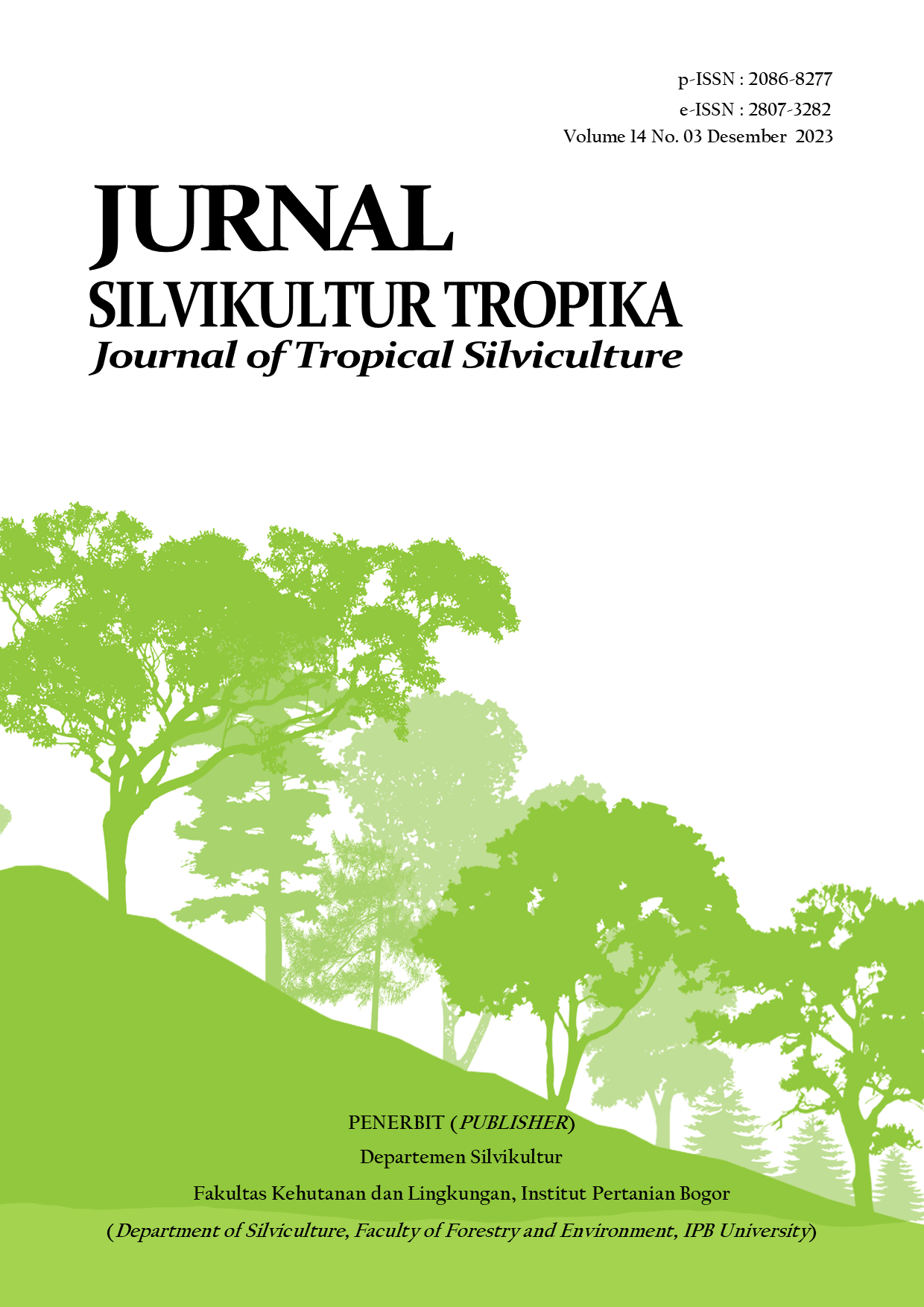Uji Potensi Mikrob Rizosfer sebagai Pengendali Hayati Penyebab Penyakit Tanaman
Abstract
Biological control is an alternative to reducing the use of pesticides because it can suppress the growth of plant pathogens and has no negative impact on the environment. This study aimed to test the effectiveness of rhizosphere microbes as biological controllers that cause plant diseases. This study contains three rhizosphere microbes (Trichoderma sp., Gliocladium sp., Bacillus sp.) and three pathogenic test fungi (Rhizoctonia sp., Sclerotium sp., Botryodiplodia sp.) were used. This study was divided into three experiments, namely (1) an in vitro antagonist test, (2) a secondary metabolite test, and (3) a growth test on sengon seeds (in vivo). The parameters measured were percentage inhibition, germination rate, growth rate, disease incidence, and disease intensity. The fungus Trichoderma sp. and Gliocladium sp. can inhibit the growth of pathogenic fungi Sclerotium sp., Rhizoctonia sp., and Botryodiplodia sp. ranging from 61.82% to 80.00%. Secondary metabolites of the fungus Gliocladium sp. are more able to inhibit the mycelia growth of pathogenic fungi Rhizoctonia sp., Sclerotium sp., and Botryodiplodia sp. compared to the fungus Trichoderma sp. with inhibition values were 71.13%, 33.83%, 23.58%, respectively. Gliocladium sp., Trichoderma sp., and Bacillus sp. can suppress disease incidence (14.29%, 12.38%, and 15.24%) and intensity of damping-off attacks caused by Rhizoctonia sp. (8.91%, 8.57%, and 9.43%). This shows that biological agents have the potential to control plant diseases
Keywords: Bacillus aereus, damping-off, secondary metabolites, Trichoderma










